That “to see such an erection spring up… disgraces the century” is a sentiment I only encountered while researching Southwark Cathedral. It is what then-famous architect Augustus Pugin said of an 1830s nave restoration.
A nasty quip from old Pugin, and an instructive one. Because you can’t like ‘em all. To have taste, you see, you must discriminate. Nietzche knew the great lover was the great despiser. A worthy connoisseur needs to deal a few savage pans. I sulked cholerically down to the Thames on Wednesday morning, my pen gilled with eager bile, keen to inflict some venom verdicts of my own.
“Ah, there's my victim,” I thought, nearing London Bridge. There was meagre Southwark, with its mild spire, its smoggy seat, its pathetic 1905 ascension date, and its 2-star rating from Jenkins, the lowest he gives to any from Batsford & Fry’s ‘major cathedrals’ category.
Southwark is dwarfed by skyscrapers, obscured across the river by a construction site, eighteen metres from a noisy train viaduct, drenched in the pong of the Borough food market’s mixed extortions, and ignored by grim bridge-crossing commuters at a rate of thousands per hour. I entered silently, an assassin.
Inside, the first thing you see is their ‘window to the past’. It’s actually a hole to the past. You look over a railing and see stones from all ages. From the 1st century: some Roman road, the 12th a bit of priory foundation, 17th that shard of Delft-style kiln, the 18th the sunken pavement, the 19th yonder chunk of lead water pipe.
The church proper’s oldest intrigue is an effigy of a knight from around 1280. Almost uniquely among effigies of knights, it is made of timber. The detail is amazing for wood. It’s one of the oldest monuments of its kind. And the way they know its age is fascinating: because the armour has no coat or arms or anything, they know it was made before heraldry even existed.
There's more woodwork. Just a little along is a splendidly, gaily painted effigy of the 14th century poet John Gower, who lived in the precinct and is buried in the church.
I won’t pretend to be Gowerpilled, but he’s far from the only great writer at Southwark. We might come in mind of another parishioner by checking for which monarchs Gower was poet laureate. Richard II, Henry IV…
Across the nave is a glorious stained glass window to Shakespeare, stocked brilliantly with the miracle gallery of his souls. Prospero has the central light, but the student considers his skull, the kids flirt on their balcony, madame carries her candle. I don’t think you see these favourites in any other church. I couldn’t make them all out, but had a lot of fun trying. Comment who you find.
My bus to the cathedral had followed Shakespeare and his mates’s journey when they dismantled their landlord’s Shoreditch theatre and rebuilt it outside the city limits while he was on his Christmas hols. An icy, dark, wonderfully daring and mad escapade.
There is also a window for Geoffrey Chaucer, England’s greatest medieval poet. His rowdy pilgrims set off on their journey to Canterbury just round the corner, at the Tabard Inn. It’s an office now, but next door is the George, our last surviving galleried coaching inn. It promises and delivers “the romance of the stagecoach era”.
South of these inns was the ancient thoroughfare to Canterbury and Dover. North of them was London Bridge, the only bridge across the Thames from Roman times until 1750. The George tells you enchantingly that “For centuries, weary travellers have arrived at our doors in search of nourishment, lodging and stabling”.
Charles Dickens, maybe England’s greatest novelist, drank there and mentioned it in Little Dorrit. He visits the cathedral, too. In one investigation of bell ringing he climbs the belfry and is left “but weak about the knees and giddy about the head.”
The cathedral, a sign tells you, “stands at the oldest crossing point of the tidal Thames at what as the only entrance to the City of London across the river for many centuries. It is not only a place of worship but also of hospitality, welcoming all.” They let me wander around, even holding my contraband cappuccino. Although it costs “£4,500 a day to look after this beautiful and historic place”, and although they have no government funding, “we are committed to providing free entry to all our visitors”.
A local stray cat was welcomed at Southwark, and given food and shelter. ‘Doorkins Magnificat’, as she was later called, got to meet the Queen and the Mayor on formal visits, and on her death was given the first cathedral memorial a cat ever had.
As you leave the tolerant air the cathedral, past its great outdoor cafe, there are inscribed in large stones at the edge of the river a quote by Elizabethan explorer Sir Walter Raleigh: “There are two things scarce matched in the universe: the sun in heaven and the Thames on earth.”
By then I agreed. I had come with a plan to pan, but that was as ruined as the ruin of Winchester Palace outside. The sun had come, and I was in love with Southwark, with London, and with life. Weak about the knees, giddy about the head. “Picturesquely crowded”, is what B&F call Southwark’s transepts and what the world seemed to me when I left. I love that Elizabethan feel of busy bustling flourishing. I rejoined the commuters on the sunny bridge and crossed it. Monument, Bank of England, the magistrates’ court, Thomas Becket, Captain James Cook, a wedding shop, the Bow Bells, Milk Street, Bread Street, Pret, TSB, Gregg’s!
In Southwark’s north transcript, oddly, is a monument to a quack doctor. Dr Lionel Lockyear sold miracle pills that included, as an ingredient, “sunbeams”. Today we all know you can’t ingest sunbeams. Well…
Southwark lands with great dignity at sixteen in our rankings, easily defying Jenko’s two stars. Is this project useless? Are we doomed to fall for everything? Who knows. We could close on the lines they chose for their Shakespeare window - we are such stuff:
These our actors,
As I foretold you, were all spirits and
Are melted into air, into thin air:
And, like the baseless fabric of this vision,
The cloud-capp'd towers, the gorgeous palaces,
The solemn temples, the great globe itself,
Yea, all which it inherit, shall dissolve
And, like this insubstantial pageant faded,
Leave not a rack behind. We are such stuff
As dreams are made on, and our little life
Is rounded with a sleep.

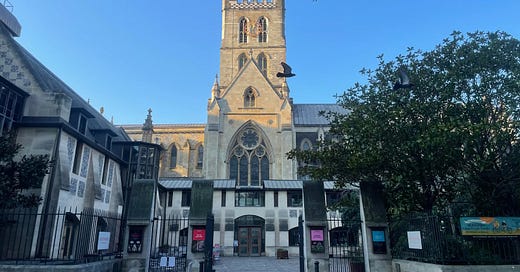



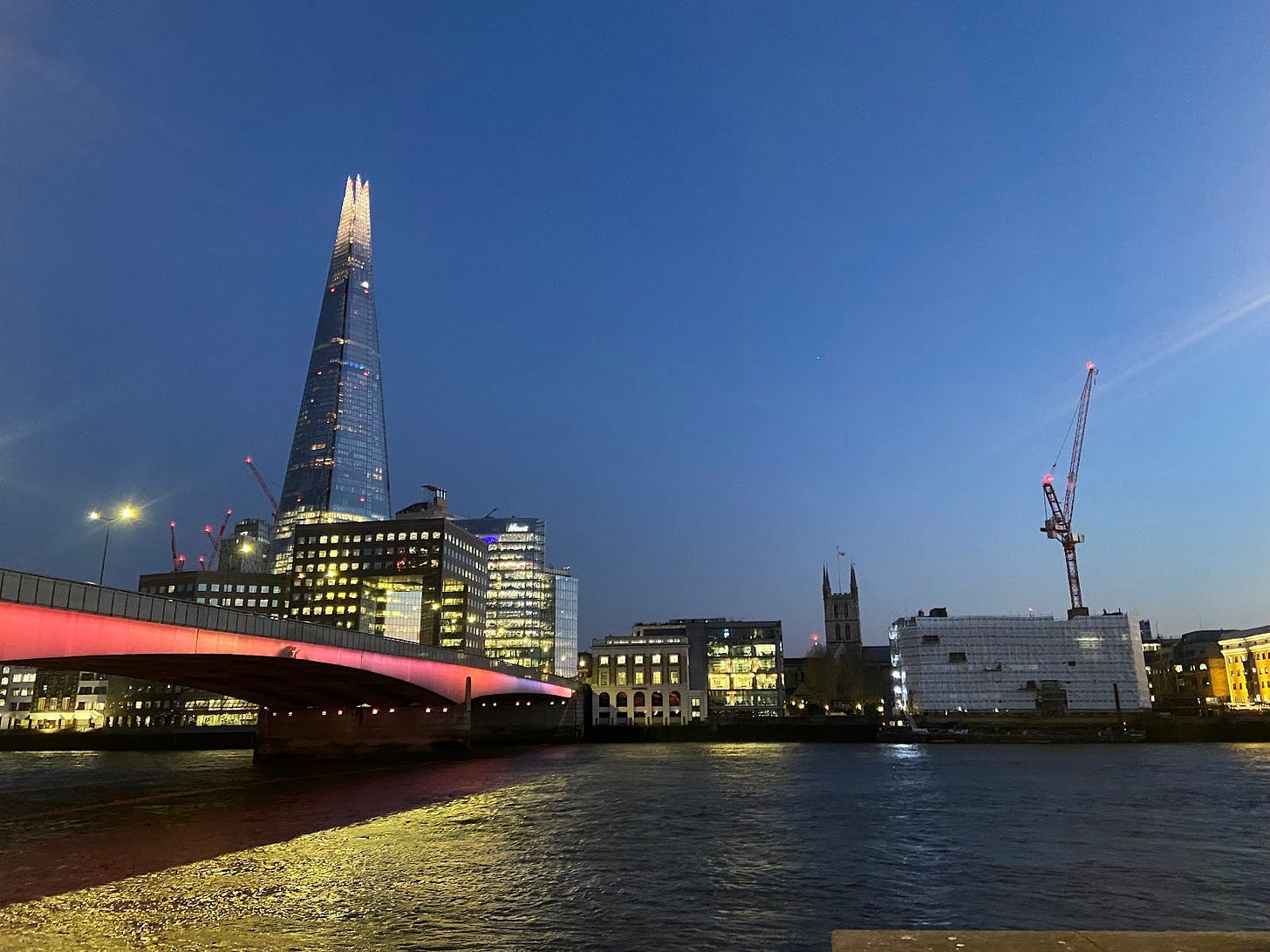
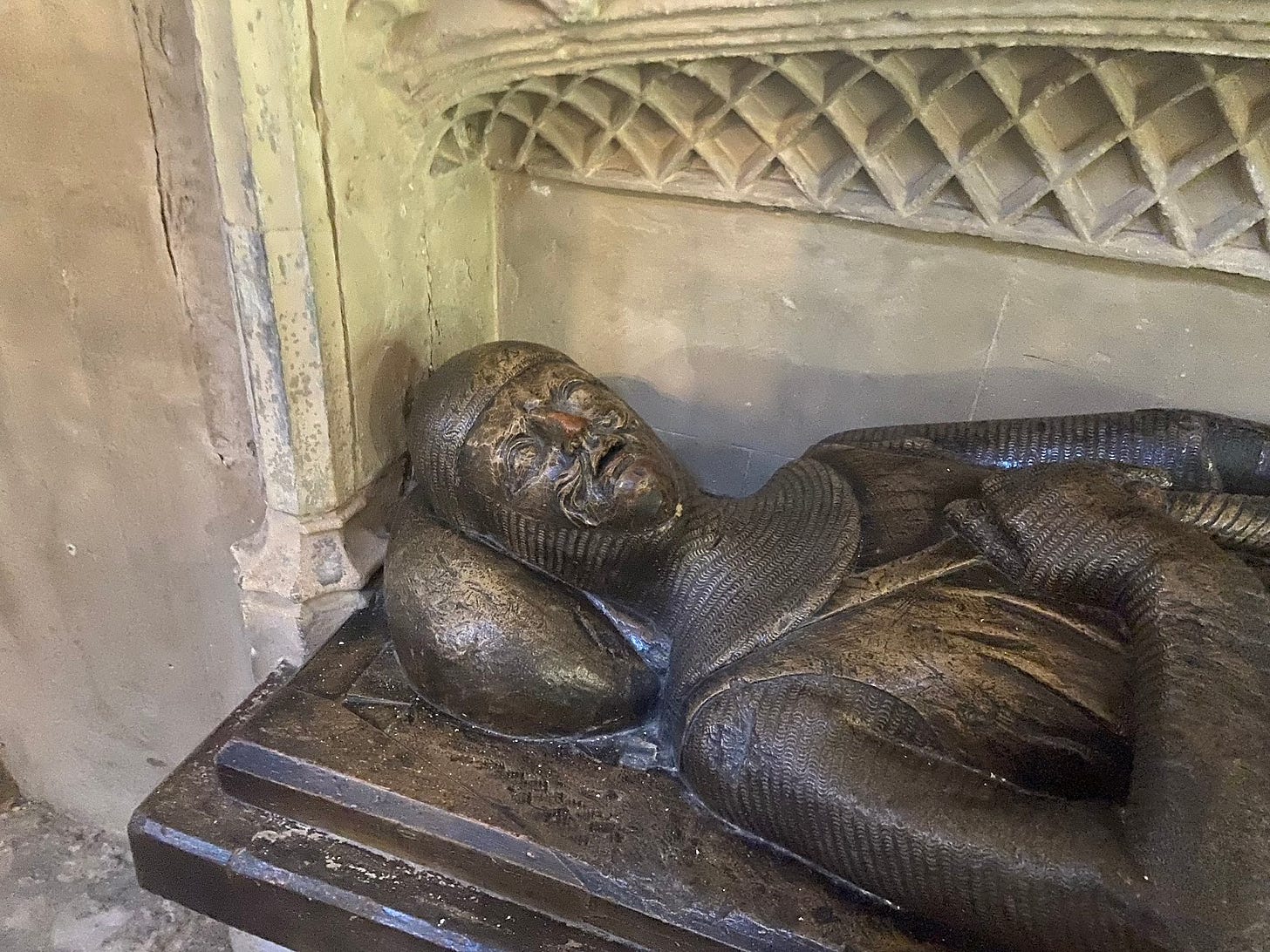
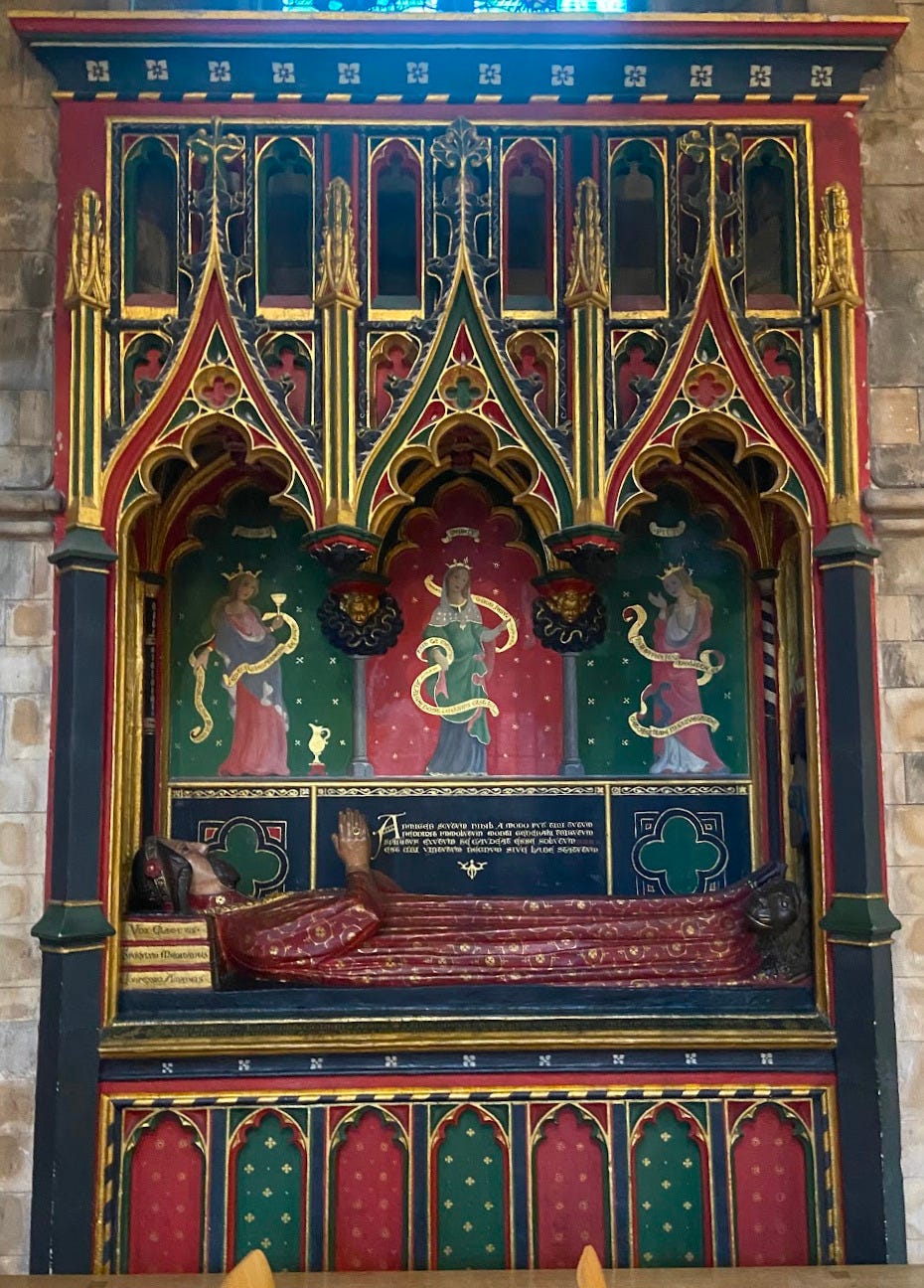
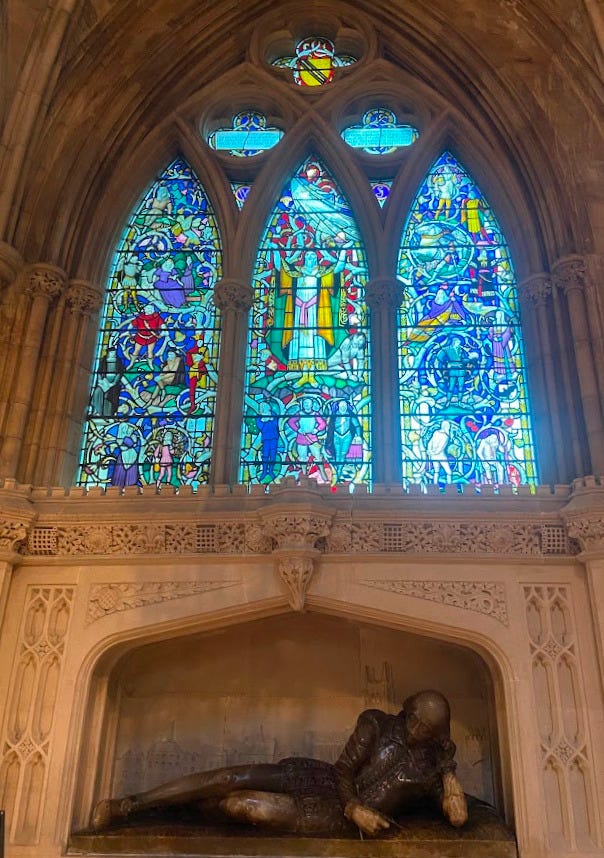
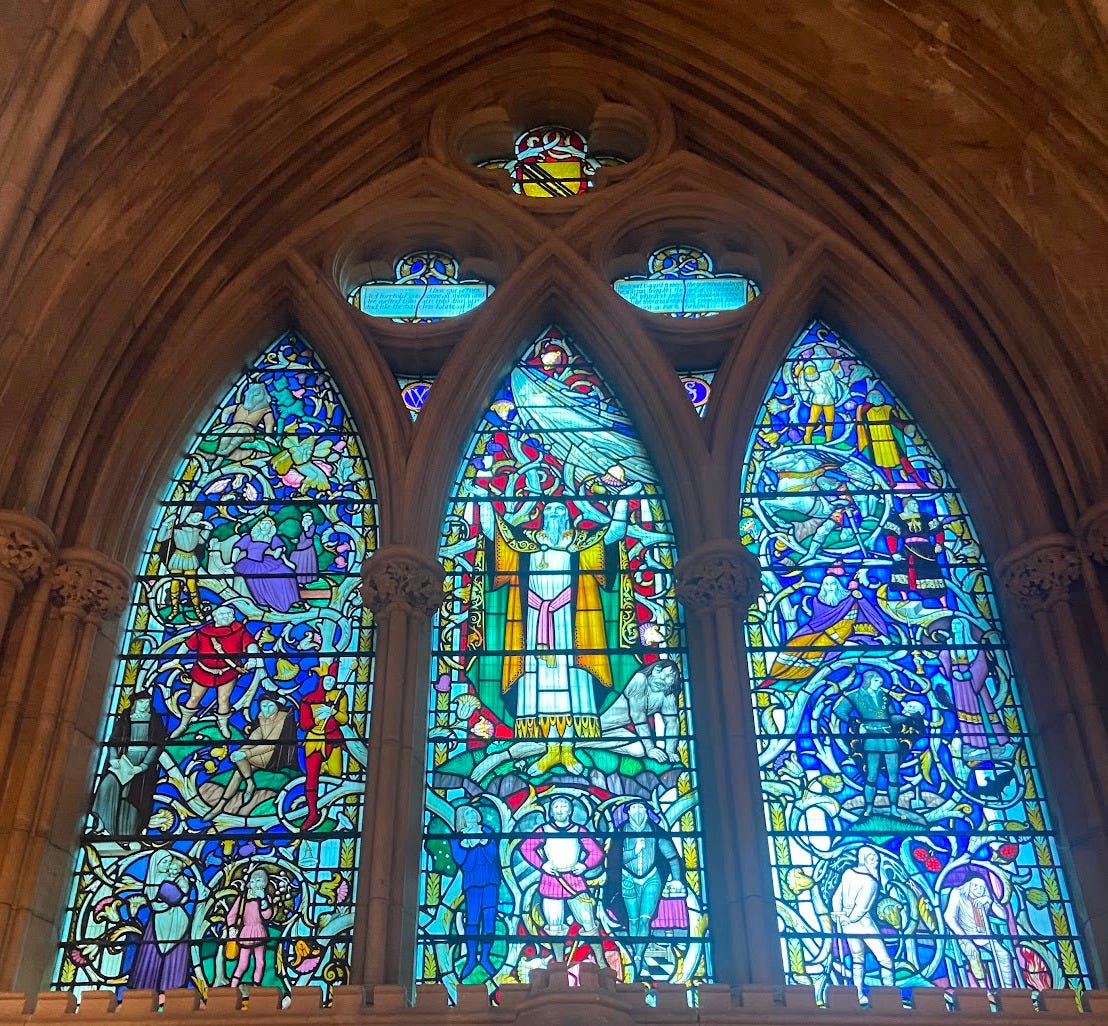
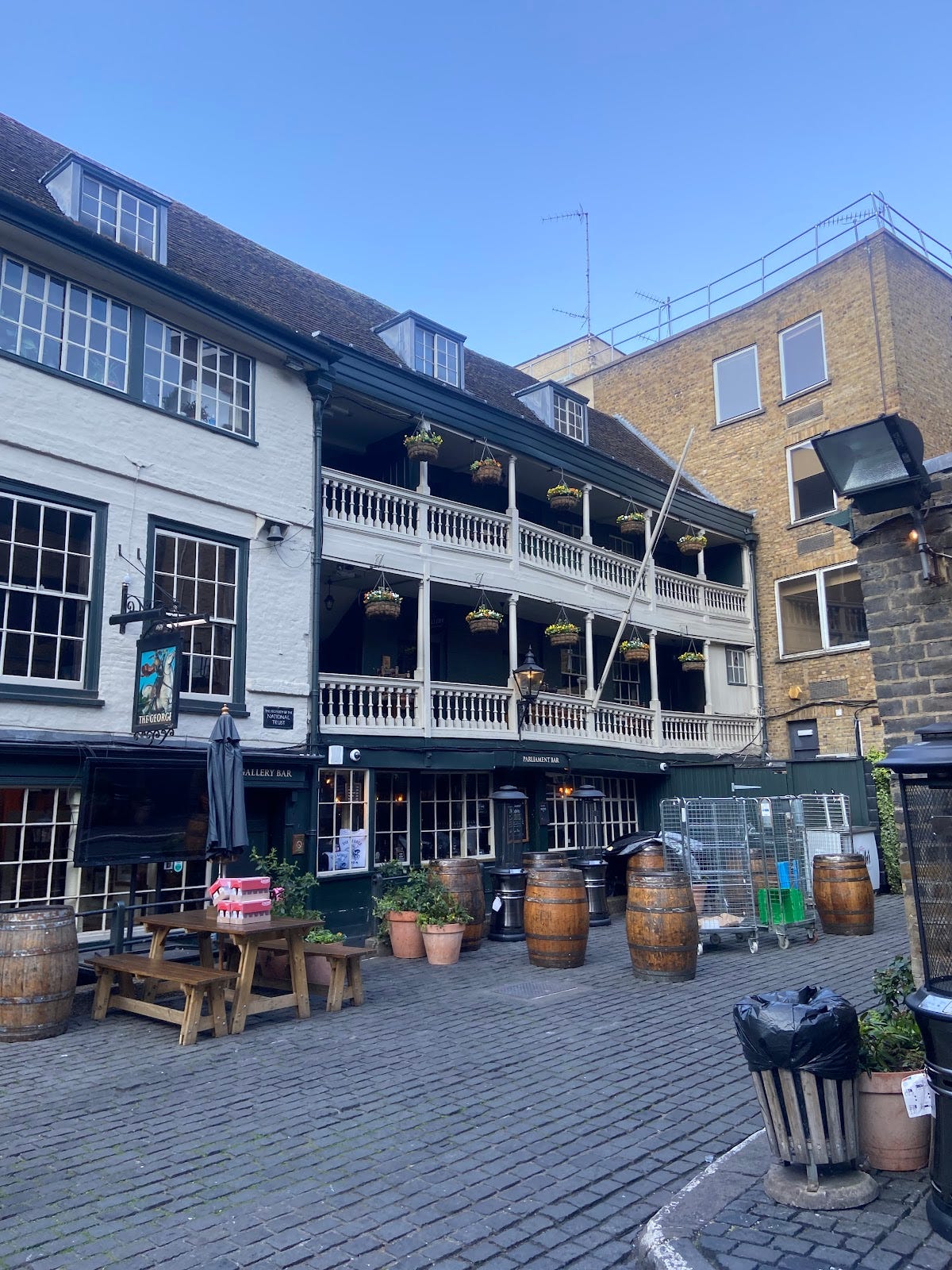
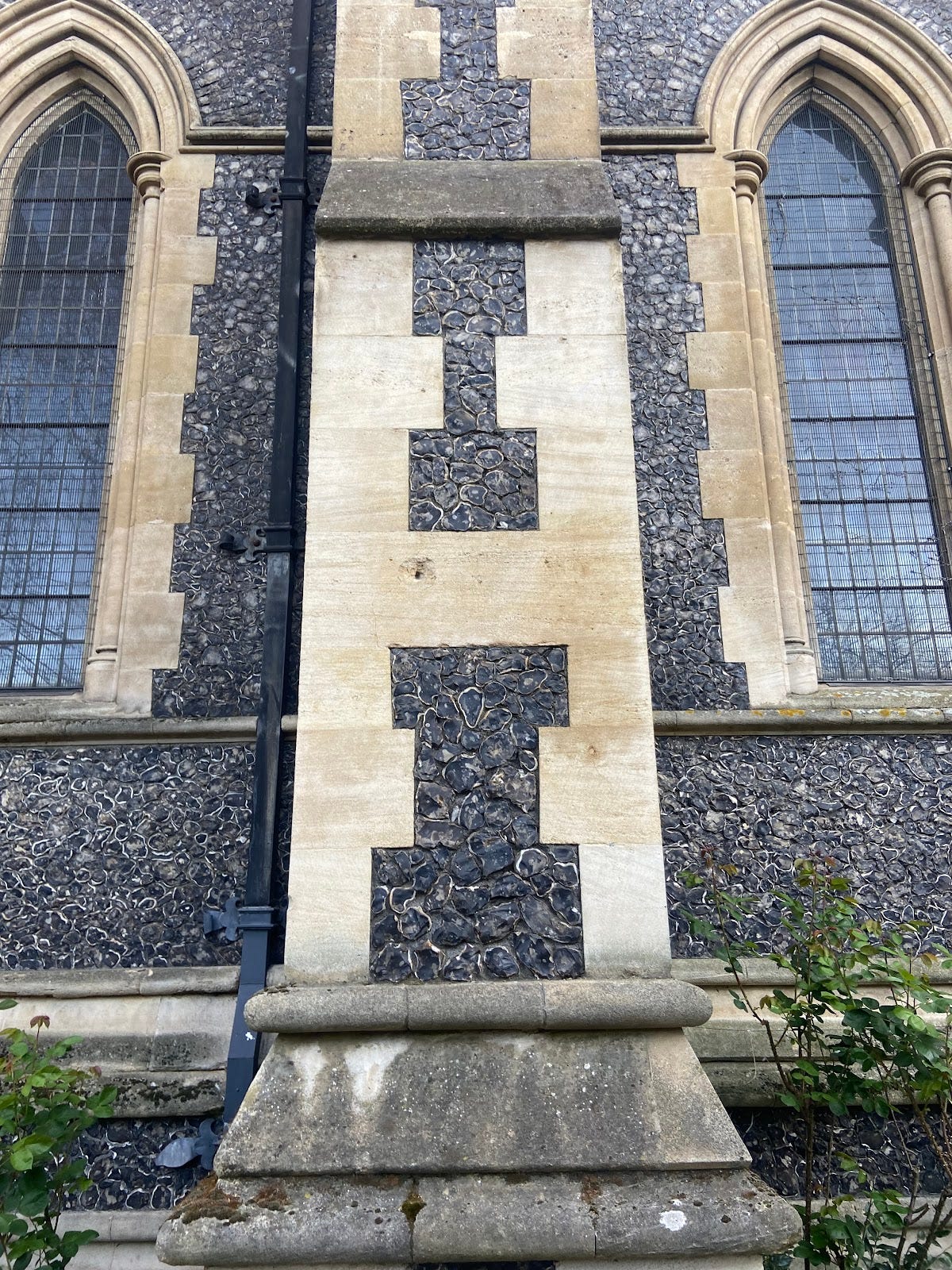




Great stuff, I didn't think I would be interested in this series, but I am! I love where I live and all its attendant and mostly bogus cliches-- Los Angeles, Dreamland, a vast strange sprawl. I (sometimes) love driving on the freeway, anonymous, sun-baked and dissolute. But it must be a strange and wonderful sensation to walk the same streets that Blake and Dickens and Shakespeare walked and realizing they experienced the same sunny afternoons and bustling crowds.
Loved this appreciation of my favourite building in London. I love the way the Victorians wrapped railway lines round the church, and how it stands by seething Borough Market and not in some sedate cathedral close. Bankside used to be very disreputable, and it still feels pleasantly louche. Ever since the 1950s, the cathedral has been a beacon of liberal South Bank Religion.